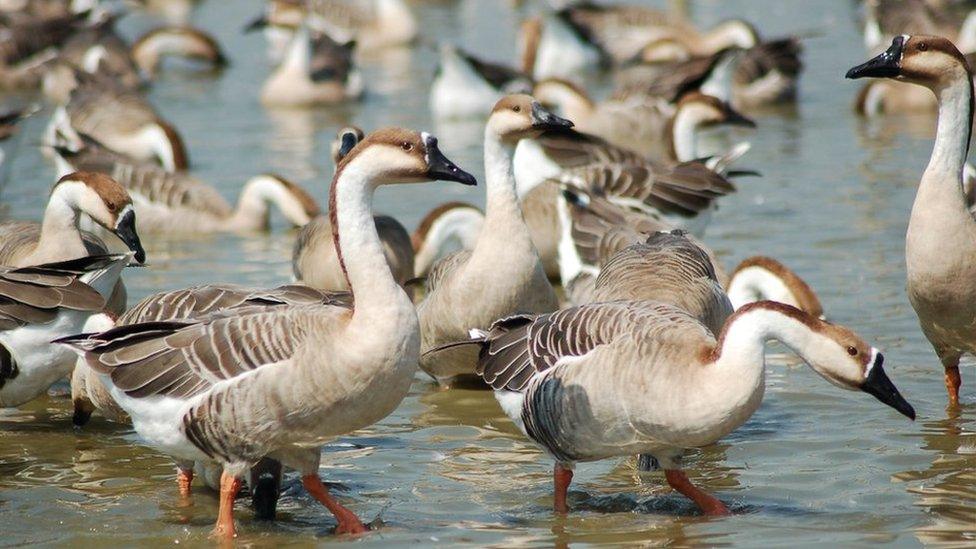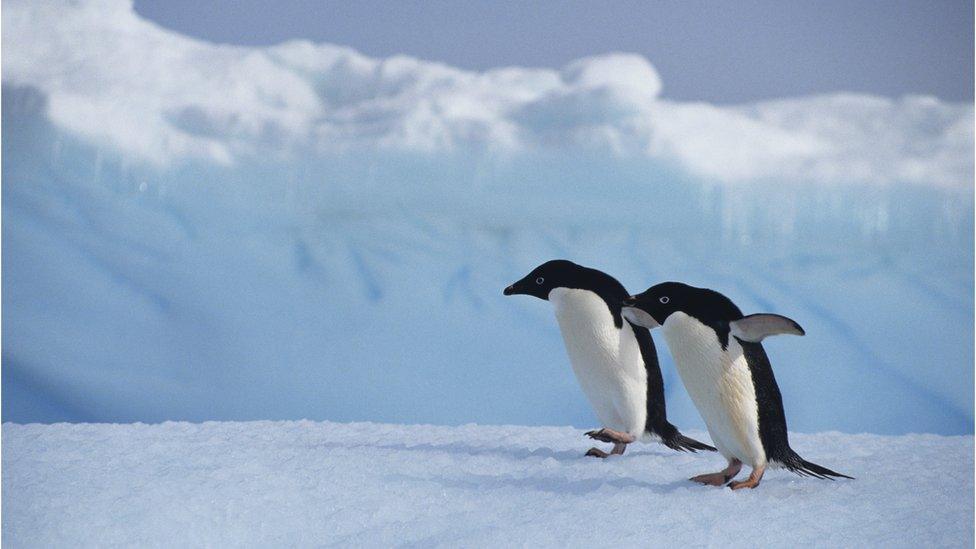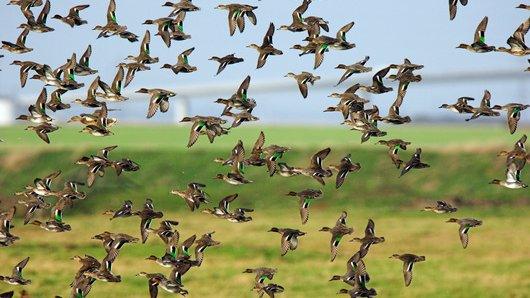Bird tracking could provide flu early warning system
- Published

Deaths from bird flu at a turkey farm in Germany
Monitoring birds on their long distance migrations may provide early warning of bird flu outbreaks, say scientists.
There is growing evidence that wild birds move the disease around the world as they fly thousands of miles to their winter homes.
Researchers studied the genetic code of flu viruses in birds from 16 countries infected during the 2014 outbreak.
They say bird flu was carried by migrating birds from Asia to Europe and North America via the Arctic.
Bird flu is an infectious disease of poultry and wild birds.
The strain studied was H5N8, which first appeared in South Korea in early 2014.
The virus later spread to Japan, North America and Europe, causing outbreaks at poultry farms between autumn 2014 and spring 2015.
Data sharing
"Bird flu is a major threat to the health and well-being of farmed chickens worldwide," said lead researcher Dr Samantha Lycett of the University of Edinburgh.
"Our findings show that with good surveillance, rapid data sharing and collaboration, we can track how infections spread across continents."

Farmed geese at Poyang Lake, China
The study suggests that the virus spread along two main migration routes - or flyways - for wild birds:
From the east Asia coast/Korean peninsula, north to the Arctic coast of the Eurasian continent, then west to Europe
From the Korean peninsula, then east across the Bering Strait and south along the north-west coast of North America.
According to international scientists, contact with infected wild birds or materials contaminated with their droppings was the most likely route of transmission.
Commenting on the research, Dr Derek Gatherer of the University of Lancaster said H5N8 is the latest in a long line of bird flu outbreaks to cause concern.
"Flyways are the routes that migrating ducks, geese and other wildfowl follow every year from their breeding grounds to their winter retreats," he said
"Just as a human airline passenger can spread human flu from continent to continent, each migratory bird that carries bird flu is a potential spread risk to other points along its flyway."
The study, published in the journal Science,, external was conducted by the Global Consortium for H5N8 and Related Influenza Viruses.
Follow Helen on Twitter @hbriggs., external
- Published23 September 2016

- Published6 February 2015
